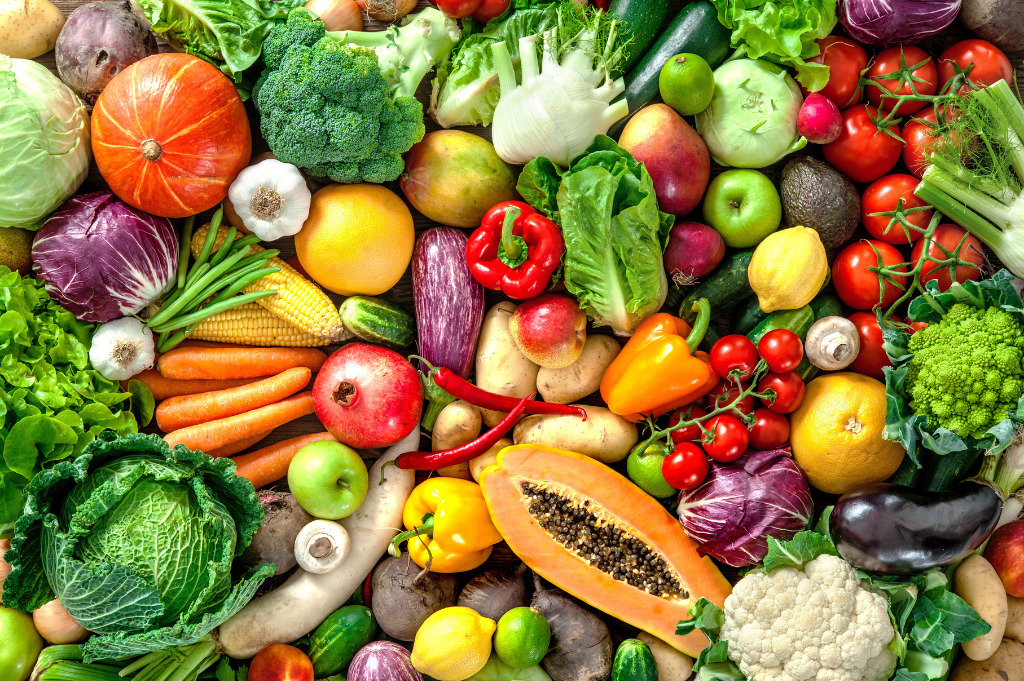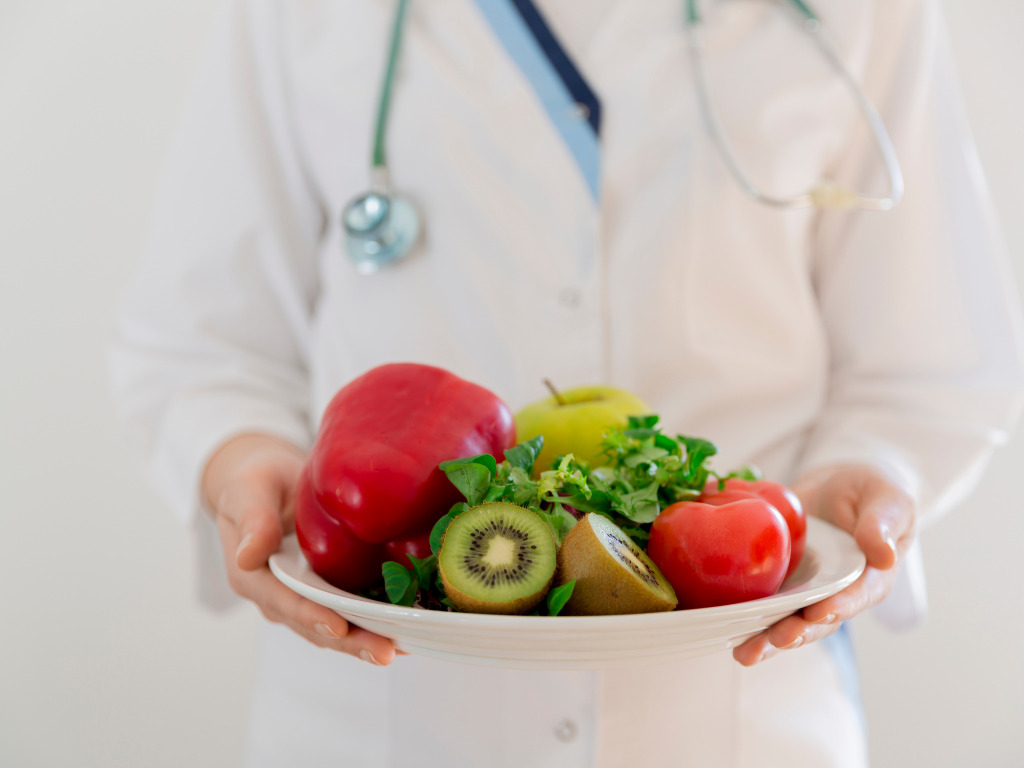Food is Medicine Series: Can Produce Prescription Programmes Improve America’s Health & Food Security?
5 Mins Read
Can prescribing fruits and vegetables help fix a person’s health issues and improve their access to nutritious food? Produce prescription programmes are in the spotlight again, following the results of a new study – possibly the largest of its kind – finding that patients experienced weight loss and drops in blood pressure levels after eating more fruits and vegetables.
This article is the first installment of our Food is Medicine content mini-series.
Last September, the American Heart Association (AHA) launched its Food is Medicine initiative in collaboration with the Rockefeller Foundation, which aims to measure the impact of produce prescriptions with randomised trials and further research. Now, a study in its peer-reviewed journal, Circulation, has conducted what is most likely the largest trial to analyse the effect of fruit and vegetable prescriptions.
Researchers studied 3,881 people from low-income neighbourhoods with, or at risk for, poor cardiometabolic health who received between $15 to $300 a month (with a median of $63) to buy fruits and vegetables from grocery stores or farmers’ markets. The trial evaluated nine produce prescription programmes from 2014 to 2020, lasting between four to 10 months.
The benefits of fruits and vegetables
Focusing on the amount of produce people ate before and after receiving the prescriptions to assess health and food security, the analysis found that adults ended up eating 30% more fruits and vegetables (about 0.85 cups more than usual) per day. Children ate 0.26 cups more (+7%) produce daily.
Adults witnessed a decrease in blood sugar, body mass index and blood pressure, and saw the odds of food insecurity – which is linked with chronic health conditions – reduce by a third after participation in the programme. “We know that food insecurity impacts health through several important pathways, including overall dietary quality, but also through stress and anxiety, mental health and tradeoffs between paying for food and other basic needs such as housing costs, utilities, and medications,” said lead author Kurt Hager.
He noted that the size of the effect of fruits and vegetables on blood pressure was “about half that of commonly prescribed medications, which is notable for a simple change in diet”. So simply having better food access could have contributed to people’s health improvements too.

Eating more plants and diet-related disease
“The Covid-19 pandemic really underscored the high rates of diet-related illness in the US,” Hager said. “Heart disease and diabetes became leading risk factors for Covid-19 hospitalisation and death.” Heart disease is the leading cause of death in the US, and type 2 diabetes is among the top killers too. These conditions, as well as certain cancers, have been linked to our diets and what we eat.
One chronic condition that raises the risk of these health issues is obesity, which is the second leading cause of preventable death in the US (along with being overweight). And many studies have proven the positive impact eating more fruits and vegetables can have on human health.
Eating more plants has been linked to a lower risk of heart disease among adults by the AHA, while a study in the Nature Journal found that plant-based diets help feed gut microbes, which are associated with reduced risks of heart disease, obesity and diabetes. Another study has found that plant-based diets generally have better nutritional profiles than animal products, and are linked to improved overall health, increased muscle mass, and healthy weight loss.
In addition, replacing conventional processed or red meat with fruits and grains can reduce the risk of type 2 diabetes. Research published in the British Medical Journal says diets high in plant protein are associated with a lower risk of death from all causes.
Food prescriptions on the rise
Fruit and vegetable prescription initiatives have expanded in the last decade, and particularly in the last few years following the pandemic. In July, the US Department of Health and Human Services funded $2.5M to pilot a national produce prescription programme in tribal communities, as part of the Biden administration’s National Strategy on Hunger, Nutrition and Health. And in April, the Rockefeller Foundation partnered with the US Department of Veteran Affairs to analyse the impact of food and vegetables on veterans’ well-being, which included produce prescription.
The state of California has already been testing out food prescription programmes, and had a bill rejected that would have standardised the effort. Furthermore, research has found that incentivising healthy eating could save $100B in the US’s national healthcare costs.
There was a similar study to Hager’s in Australia, conducted by the University of New South Wales. It found that prescribing produce significantly improved diets, health benefits (like lower cholesterol levels and weight loss) and food security. Meanwhile, the UK is also investing in such programmes.

The food insecurity question
But some say food prescriptions are a stopgap measure in tackling food insecurity. As Canadian publication Healthy Debate‘s writer Tim Li says, they are “unable to resolve the broader experiences of material deprivation, let alone the underlying income inadequacy”. Summarising multiple responses to such initiatives, he adds: “Providers of food prescriptions in Canada have acknowledged that they are ‘at best, stopgap measures‘, ‘not a sustainable response‘, ‘not a solution to food insecurity‘ and ‘a response to broken social systems‘”.
Mitchell Elkind, chief clinical science officer at the AHA, called the Circulation study “wonderful”. “This analysis of produce prescription programs illustrates the potential of subsidised produce prescriptions to increase consumption of nutritious fruits and vegetables, reduce food insecurity and, hopefully, improve subjective and objective health measures,” he said.
But he stressed the importance of randomised trials, akin to those for a drug. Hager said more research is needed to find out if fruits and vegetables actually contributed to better health for participants. It’s possible that, as the Washington Post points out, the cardiometabolic health improvements happened because the money for fruits and vegetables addressed the larger food security issue for households – 56% of those involved in the study experienced food insecurity.
Hager called for a solution and outlined the importance of finding one quickly: “If we don’t figure this out, our healthcare costs are going to continue to skyrocket and we’ll continue to have some of the worst heart attacks, mortality rates and obesity rates in the world. We have to be better on this.”
Don’t miss part two of our Food is Medicine series: How to Save American Lives and Billions of Dollars with Food Prescriptions



